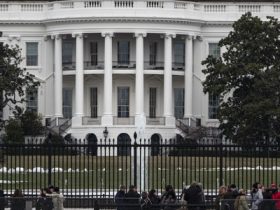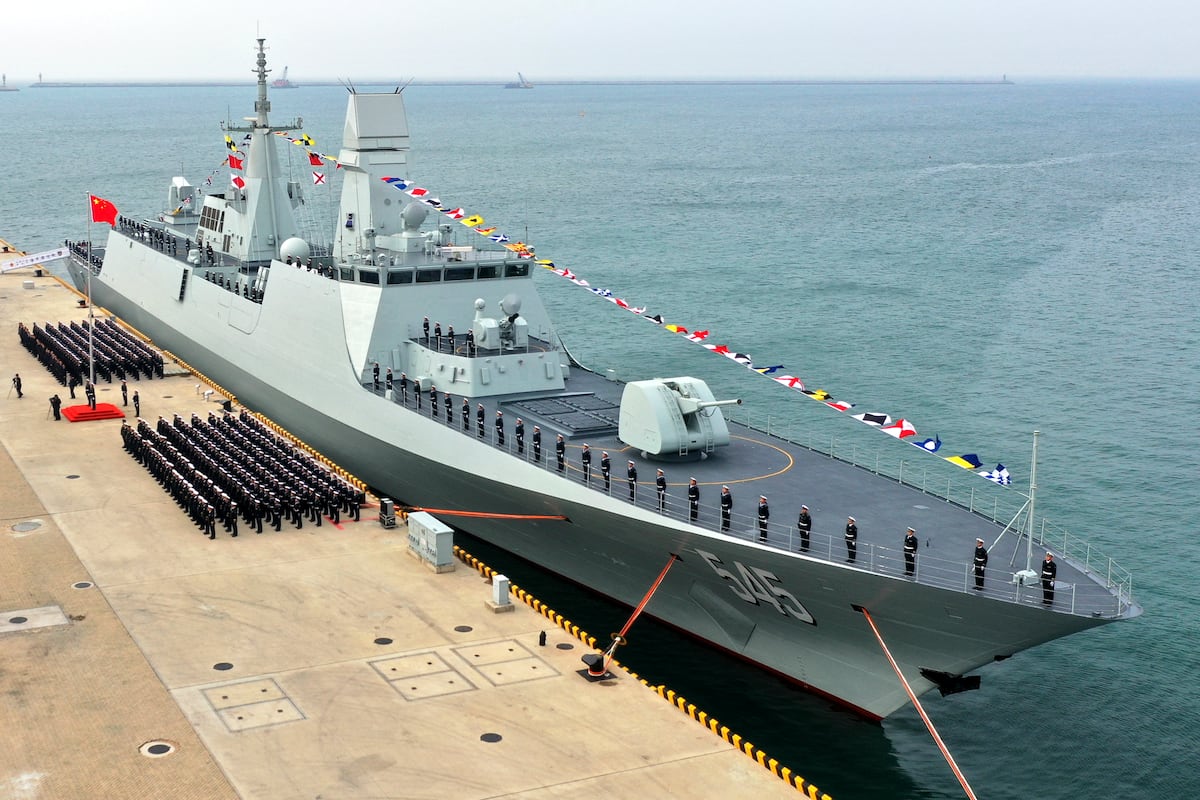As North Korean troops train in Russia for likely deployment against Ukrainians, South Korea’s defense minister said Wednesday that Moscow might send Pyongyang dangerous missile technology that he said would “escalate tensions” across the Korean peninsula and make North Koreans a far more threatening force.
“There is a high possibility that North Korea, in exchange for their troops’ deployment, would ask for cutting-edge technology,” Kim Yong-hyun said at a Pentagon press conference with U.S. Defense Secretary Lloyd Austin.
Kim said the requests would likely be in the areas of tactical nuclear weapons, ICBMs, reconnaissance satellites, and missile submarines.
Austin said some 10,000 North Korean soldiers are currently in Russia, where “they’re drawing equipment and conducting some training.”
Austin said Russia might send the North Koreans to its Kursk region, where Ukrainian forces have been fighting since they invaded in August. He called that possibility “disturbing,” but wouldn’t comment on the timing of that or that it was a certainty that would occur.
Pentagon spokesman John Kirby said on Tuesday that the soldiers are likely special operations forces.
Background
North Korea has been steadily increasing the destructive power of its nuclear weapons for years and in November 2017 unveiled a new design for an intercontinental ballistic missile, the Hwasong-15, which could reach the continental United States and closer targets in the Pacific.
But North Korea’s missile program lacks the sophistication of China’s and Russia’s, due in large part to crushing international sanctions (and possibly, clandestine U.S. sabotage.) Result: despite a large and expensive increase in testing over the last ten years, North Korea’s missiles are unreliable, especially the long-range variants. They have failed launch tests, exploded in the air near North Korean population centers, and, especially the intercontinental missiles, have not shown they can actually hit any target other than the ocean.
Russia could help North Korea fill some of those technological gaps, particularly in terms of targeting with satellite data, which means its missiles could become much better far sooner than was thought possible just a few years ago.
Why far sooner? In part because giving technology to North Korea was something Vladimir Putin promised not to do.
“Let me remind you that Russia signed onto the UN Security Council resolution agreeing not to provide military assistance to North Korea,” Austin said. “Of course, we know that Putin has gone tin-cupping to get weapons from the DPRK and Iran. Turning to a pariah state like North Korea for troops just underscores how much trouble he is in.”
Joint response
In response to the deepening coordination between Russia, China, and North Korea, the United States and South Korea on Wednesday advanced a new series of cooperation agreements to enable technology transfer and joint development between the two countries.
According to a Pentagon fact sheet, the initiatives include:
- More cooperation on nuclear deterrence to build out better joint responses to nuclear and conventional threats on the Korean Peninsula via the Nuclear Consultative Group.
- Enhancements to crisis management through joint field exercises like Freedom Shield and Ulchi Freedom Shield.
- Upgrading the Shared Early Warning Systems to more quickly share radar and other data in response to North Korean or other missile threats.
- Establish a new Defense Science and Technology Executive Committee to help both militaries integrate AI, autonomous systems, and quantum tech into defense applications.
- Accelerate industrial cooperation through the Partnership for Indo-Pacific Industrial Resilience and mutual maintenance and repair, or MRO, to improve interoperability between the two militaries’ equipment.
The two militaries also announced today a new regional cooperation framework” to increase collaboration on Indo-Pacific security, with an emphasis on maritime security, defense-industry cooperation, and multilateral exercises.
Those efforts build on a trilateral security agreement that Japan, South Korea, and the United States launched this July in Tokyo. That agreement advanced its own framework to institutionalize missile-data sharing, high-level dialogues, and joint military exercises.
“The nuclear and missile threat from North Korea is now an existential threat, not only to the ROK but also to the Indo-Pacific region. We had a shared understanding that the ROK US, Japan, trilateral security cooperation framework signed in this July represents a historic milestone in trilateral security cooperation,” Austin said.
Read the full article here








Leave a Reply